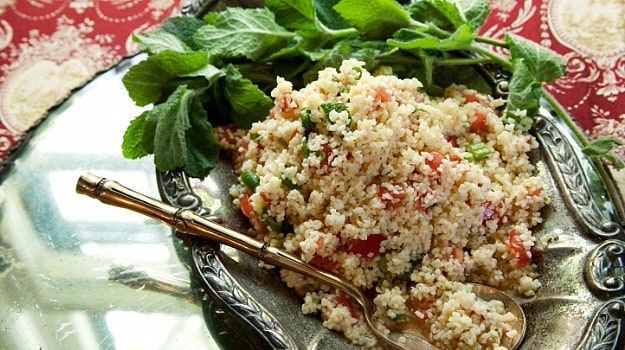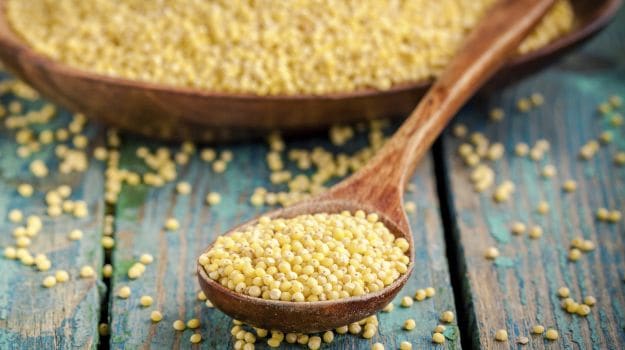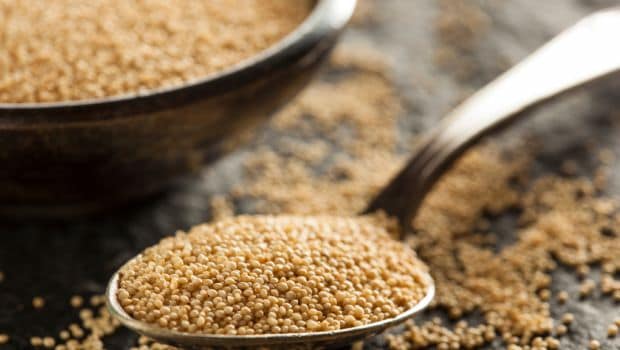To know gluten free grains let’s first start with understanding what Gluten is? Gluten is the protein found in wheat, rye, oats and barley. Thus, everything else is gluten-free. The myth that following a gluten-free diet is very hard isn’t the reality. There is no shortage of grains which can provide healthy alternatives for a diet free in gluten, the problem lies in the cross contamination. Most people who suffer from Celiac disease can become uncomfortable even when a small amount of gluten is eaten. This may happen despite them buying and eating ‘gluten-free’ foods because most places of production do not exercise the highest standards of hygiene and the chances of cross-contamination remain high. A list of gluten free grains is as follows:1. Rice
Rice is the seed of grass species Oryza Sativa (Asian Rice). It is the most widely consumed staple in Asia. It is grown in warm parts of the world mainly in Asia, Africa, northern Italy and west coast of North America. Rice has a large variety like brown rice, red rice, black rice and wild rice found in various parts of the world. In a gluten free diet rice is a mother grain and can be used as is or used to make flour that can be used to make rotis, cakes and cookies.(Also read: Brown, Red or White - Which Rice is the Healthiest?)

2. Sorghum
Sorghum is a genus of plants in the grass family. It is native to Australia with a range grown in India, Africa and Asia. In India it is called ‘Jawar’ or ‘Jowar’ and it is easily available at a local store. Jowar can be milled to make flour to make rotis and it is used as a blend in the gluten free flour to make all baked goods.
 3. Millet
3. Millet
Millets are a group of highly variable small-seeded grasses, widely grown around the world as cereal crops or grains for fodder and human food. Grown mainly in Africa and Asia. Millet is found in three varieties - Pearl Millet is called Bajra, Finger Millet is called Ragiand Proso Millet is called Barri in Hindi. Millets can be cooked in the grain form and can be milled to make excellent flour that is multipurpose in nature from rotis to patties, breads.

4. Amaranth
It is a cosmopolitan genus of annual or short-lived perennial plants. Some amaranth species are cultivated as leaf vegetables, pseudo cereals, and ornamental plants. Most of the Amaranthan species are summer annual weeds and are commonly referred to as pigweed. In India, Amaranth seed is called ‘ramdana’. It is very easily available and is an excellent grain that can be substituted as starch in a gluten free cooking. Replace corn-starch with powdered amaranth. My favourite is brownies with amaranth.(Also read: How to Use Amaranth)
 5. Buckwheat is a plant cultivated for its grain-like seeds and as a cover crop. Buckwheat is not a grass and is not related to ‘wheat’. It is also referred as a pseudo cereal. Buckwheat in India is known as ‘kuttu’ and is eaten during the Navaratri festival. Buckwheat is found as groats known as “Kasha”, hulled, unhulled version. Buckwheat is used to make gluten free beer. The ways of using buckwheat are many – from roti to pancakes, cakes and cookies.(Also read: 10 Best Buckwheat Recipes)
5. Buckwheat is a plant cultivated for its grain-like seeds and as a cover crop. Buckwheat is not a grass and is not related to ‘wheat’. It is also referred as a pseudo cereal. Buckwheat in India is known as ‘kuttu’ and is eaten during the Navaratri festival. Buckwheat is found as groats known as “Kasha”, hulled, unhulled version. Buckwheat is used to make gluten free beer. The ways of using buckwheat are many – from roti to pancakes, cakes and cookies.(Also read: 10 Best Buckwheat Recipes)
 6. Corn or Maize is a large grain plant first domesticated by indigenous people in Mexico. The six major types of corn are dent corn, flint corn, pod corn, popcorn, flour corn and sweet corn. Maize kernels are often used in cooking as starch. Corn is known as ‘Bhutta’ in India, it is easily available as fresh, dried and can be milled to make flour. Corn is the most popular grain in the world. I love corn in all its forms, from the fresh ones to the milled.7. Quinoa is the common name for Chenopodium Quinoa of the flowering plant family Amaranthaceous. It is grown as a grain crop primarily for its edible seeds. It is a pseudo cereal rather than a true cereal, due to the fact that quinoa is not a grass. Quinoa is closely related to the edible plants beetroot, spinach and amaranth. Quinoa is found in Peru, Bolivia and Chile.(Also read: 5 Best Quinoa Recipes)Being gluten free, the biggest challenge isn’t the shortage of grains. Once you begin to see life beyond ‘roti’, there are many healthy alternatives available.About the Author:Aarti Sarin Jain is an avid baker and runs an exclusive gluten-free test kitchen. She discovered the joys of a gluten-free living after her elder kid was diagnosed with Celiac Disease. She often experiments with new forms and varieties of gluten-free food without compromising either on taste or quality. You can read more on her blog, www.bakingfrommyheart.com.Disclaimer:The opinions expressed within this article are the personal opinions of the author. NDTV is not responsible for the accuracy, completeness, suitability, or validity of any information on this article. All information is provided on an as-is basis. The information, facts or opinions appearing in the article do not reflect the views of NDTV and NDTV does not assume any responsibility or liability for the same.
6. Corn or Maize is a large grain plant first domesticated by indigenous people in Mexico. The six major types of corn are dent corn, flint corn, pod corn, popcorn, flour corn and sweet corn. Maize kernels are often used in cooking as starch. Corn is known as ‘Bhutta’ in India, it is easily available as fresh, dried and can be milled to make flour. Corn is the most popular grain in the world. I love corn in all its forms, from the fresh ones to the milled.7. Quinoa is the common name for Chenopodium Quinoa of the flowering plant family Amaranthaceous. It is grown as a grain crop primarily for its edible seeds. It is a pseudo cereal rather than a true cereal, due to the fact that quinoa is not a grass. Quinoa is closely related to the edible plants beetroot, spinach and amaranth. Quinoa is found in Peru, Bolivia and Chile.(Also read: 5 Best Quinoa Recipes)Being gluten free, the biggest challenge isn’t the shortage of grains. Once you begin to see life beyond ‘roti’, there are many healthy alternatives available.About the Author:Aarti Sarin Jain is an avid baker and runs an exclusive gluten-free test kitchen. She discovered the joys of a gluten-free living after her elder kid was diagnosed with Celiac Disease. She often experiments with new forms and varieties of gluten-free food without compromising either on taste or quality. You can read more on her blog, www.bakingfrommyheart.com.Disclaimer:The opinions expressed within this article are the personal opinions of the author. NDTV is not responsible for the accuracy, completeness, suitability, or validity of any information on this article. All information is provided on an as-is basis. The information, facts or opinions appearing in the article do not reflect the views of NDTV and NDTV does not assume any responsibility or liability for the same.
Rice is the seed of grass species Oryza Sativa (Asian Rice). It is the most widely consumed staple in Asia. It is grown in warm parts of the world mainly in Asia, Africa, northern Italy and west coast of North America. Rice has a large variety like brown rice, red rice, black rice and wild rice found in various parts of the world. In a gluten free diet rice is a mother grain and can be used as is or used to make flour that can be used to make rotis, cakes and cookies.(Also read: Brown, Red or White - Which Rice is the Healthiest?)

2. Sorghum
Sorghum is a genus of plants in the grass family. It is native to Australia with a range grown in India, Africa and Asia. In India it is called ‘Jawar’ or ‘Jowar’ and it is easily available at a local store. Jowar can be milled to make flour to make rotis and it is used as a blend in the gluten free flour to make all baked goods.

Millets are a group of highly variable small-seeded grasses, widely grown around the world as cereal crops or grains for fodder and human food. Grown mainly in Africa and Asia. Millet is found in three varieties - Pearl Millet is called Bajra, Finger Millet is called Ragiand Proso Millet is called Barri in Hindi. Millets can be cooked in the grain form and can be milled to make excellent flour that is multipurpose in nature from rotis to patties, breads.

4. Amaranth
It is a cosmopolitan genus of annual or short-lived perennial plants. Some amaranth species are cultivated as leaf vegetables, pseudo cereals, and ornamental plants. Most of the Amaranthan species are summer annual weeds and are commonly referred to as pigweed. In India, Amaranth seed is called ‘ramdana’. It is very easily available and is an excellent grain that can be substituted as starch in a gluten free cooking. Replace corn-starch with powdered amaranth. My favourite is brownies with amaranth.(Also read: How to Use Amaranth)


Advertisement






